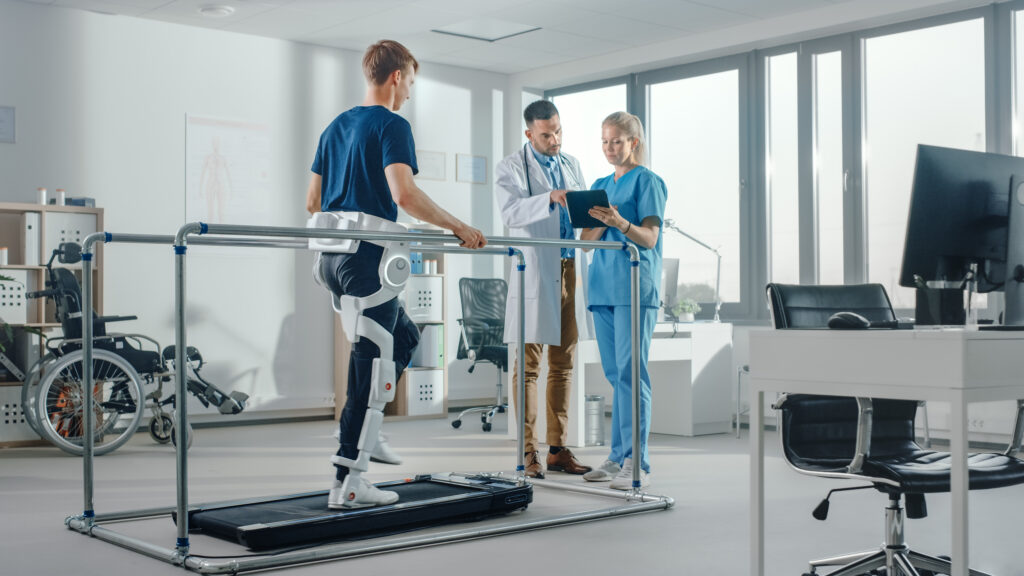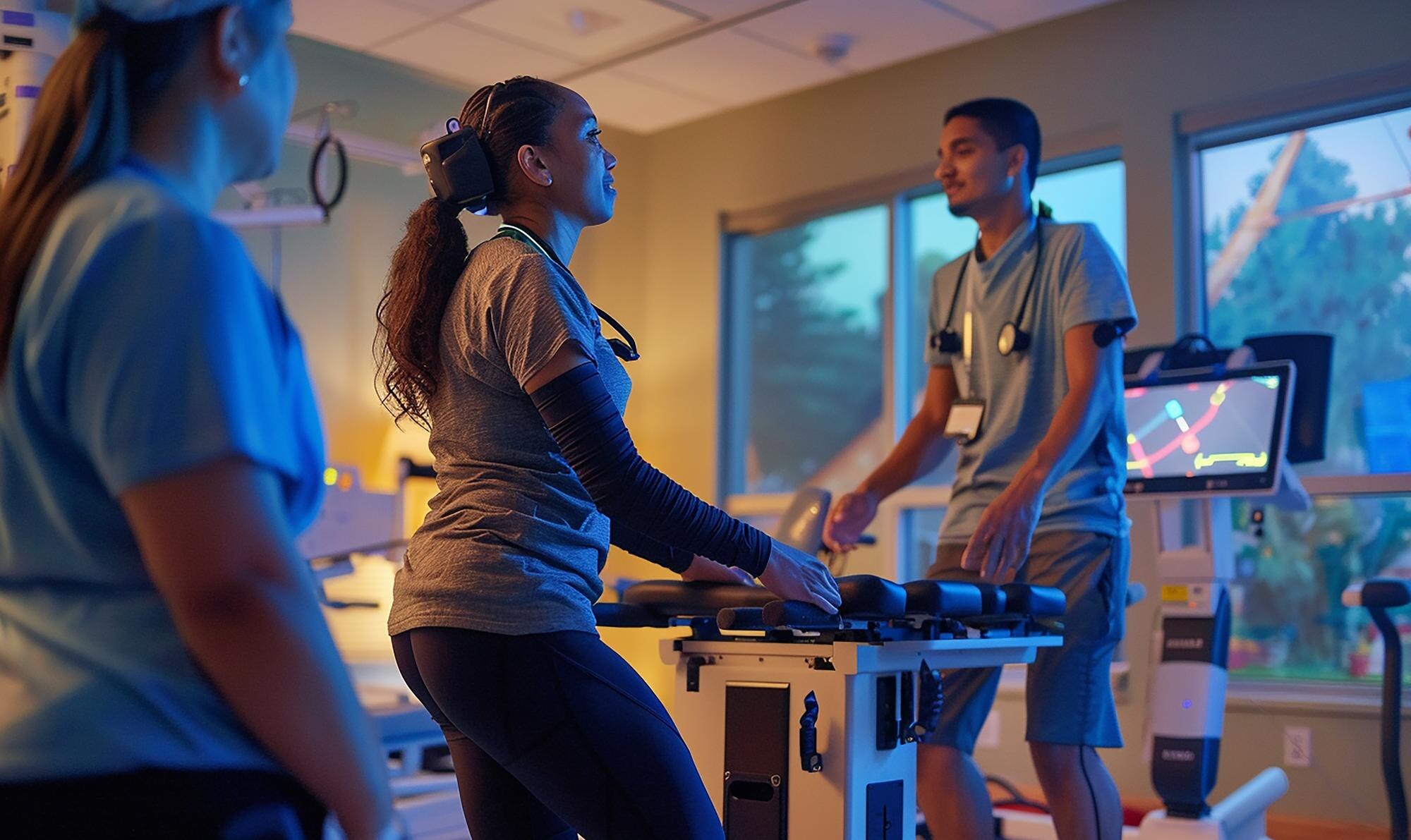Most rehab plans treat symptoms separately, missing the full picture of your recovery. Integrated rehabilitation brings physical therapy, occupational therapy, and speech therapy together under one team. This approach uses specific rehabilitation tools that support your whole well-being, not just isolated needs. Let’s explore how a team-based care plan can guide your path to holistic recovery.
Imagine having all your rehabilitation needs met under one roof. That’s the beauty of integrated rehabilitation. By combining therapies, you get a more complete recovery experience that addresses every aspect of your well-being.
When you choose integrated rehabilitation, you aren’t just treating symptoms; you’re addressing the root causes. This type of rehab combines physical therapy, occupational therapy, and speech therapy seamlessly. Each therapy works in sync, promoting faster and more comprehensive recovery. Picture a team of experts crafting a plan just for you. They focus on your overall health, making sure every need is considered.
This approach doesn’t just target specific issues. It looks at you as a whole person. Your emotional, physical, and social needs are all part of the plan. Therapists collaborate to ensure therapies complement each other. This means your exercises in one therapy won’t undo progress in another. Instead, they build on each other, creating a stronger foundation for lasting recovery.
A supportive care team is like having personal cheerleaders. They offer motivation and encouragement every step of the way. Your team includes therapists, doctors, and even family members. This network focuses on one goal: your recovery. With everyone working together, you receive consistent care that adapts to your progress, ensuring you’re always moving toward your goals.

The right tools can make a big difference in your recovery journey. From equipment to digital aids, these tools support therapy sessions and help track progress.
Physical therapy uses specific techniques to restore movement and improve strength. Equipment like resistance bands and balance boards play a crucial role. For example, resistance bands help build muscle strength gradually. Balance boards are excellent for improving stability. Each tool has a purpose and supports your therapy objectives, ensuring you progress safely and effectively. Learn more about essential physical therapy tools here.
In occupational therapy, tools are tailored to help you regain independence in daily tasks. Adaptive devices, like special grips and modified utensils, make everyday activities easier. These tools are chosen based on your unique needs, ensuring they align with your daily life. They empower you to perform tasks with confidence, fostering a sense of accomplishment and independence.
Speech therapy aids are crucial for those facing communication challenges. Tools such as speech apps and flashcards provide support in improving language skills. These aids are often used to practice pronunciation and enhance vocabulary. They offer a structured way to track improvements, making it easier to see progress over time. With these tools, communication becomes less of a hurdle and more of a stepping stone.
A team-based care approach is all about collaboration. It’s about everyone working together to provide the best care possible, ensuring each plan is tailored to fit you perfectly.
Collaboration in patient care means that every team member knows your journey. Regular meetings and updates keep everyone informed. This ensures that all therapies are in sync, maximizing their effectiveness. When everyone has the same information, your care becomes more cohesive and efficient, reducing the risk of miscommunication.

Personalized treatment plans are the heart of successful rehabilitation. These plans consider your specific needs and goals. Every session is designed with you in mind, ensuring that the therapies you receive are relevant and impactful. This personalized approach accelerates recovery and keeps you motivated as you see the results of your hard work.
Empowerment is key to successful rehabilitation. When patients and families are informed and involved, they become active participants in the recovery process. This involvement fosters a sense of control and confidence, making the journey feel less daunting. By providing resources and support, families can better understand and contribute to the recovery journey, creating a strong support system. Explore more ways to empower patients and families here.
In summary, integrated rehabilitation offers a comprehensive approach that addresses the whole person. With the right tools and a supportive team, recovery becomes a journey marked by progress and empowerment.
Most rehab plans treat symptoms separately, missing the full picture of your recovery. Integrated rehabilitation brings physical therapy, occupational therapy, and speech therapy together under one team. This approach uses specific rehabilitation tools that support your whole well-being, not just isolated needs. Let’s explore how a team-based care plan can guide your path to holistic recovery.

Imagine having all your rehabilitation needs met under one roof. That’s the beauty of integrated rehabilitation. By combining therapies, you get a more complete recovery experience that addresses every aspect of your well-being.
When you choose integrated rehabilitation, you aren’t just treating symptoms; you’re addressing the root causes. This type of rehab combines physical therapy, occupational therapy, and speech therapy seamlessly. Each therapy works in sync, promoting faster and more comprehensive recovery. Picture a team of experts crafting a plan just for you. They focus on your overall health, making sure every need is considered.
This approach doesn’t just target specific issues. It looks at you as a whole person. Your emotional, physical, and social needs are all part of the plan. Therapists collaborate to ensure therapies complement each other. This means your exercises in one therapy won’t undo progress in another. Instead, they build on each other, creating a stronger foundation for lasting recovery.
A supportive care team is like having personal cheerleaders. They offer motivation and encouragement every step of the way. Your team includes therapists, doctors, and even family members. This network focuses on one goal: your recovery. With everyone working together, you receive consistent care that adapts to your progress, ensuring you’re always moving toward your goals.
The right tools can make a big difference in your recovery journey. From equipment to digital aids, these tools support therapy sessions and help track progress.
Physical therapy uses specific techniques to restore movement and improve strength. Equipment like resistance bands and balance boards play a crucial role. For example, resistance bands help build muscle strength gradually. Balance boards are excellent for improving stability. Each tool has a purpose and supports your therapy objectives, ensuring you progress safely and effectively. Learn more about essential physical therapy tools here.
In occupational therapy, tools are tailored to help you regain independence in daily tasks. Adaptive devices, like special grips and modified utensils, make everyday activities easier. These tools are chosen based on your unique needs, ensuring they align with your daily life. They empower you to perform tasks with confidence, fostering a sense of accomplishment and independence.
Speech therapy aids are crucial for those facing communication challenges. Tools such as speech apps and flashcards provide support in improving language skills. These aids are often used to practice pronunciation and enhance vocabulary. They offer a structured way to track improvements, making it easier to see progress over time. With these tools, communication becomes less of a hurdle and more of a stepping stone.

A team-based care approach is all about collaboration. It’s about everyone working together to provide the best care possible, ensuring each plan is tailored to fit you perfectly.
Collaboration in patient care means that every team member knows your journey. Regular meetings and updates keep everyone informed. This ensures that all therapies are in sync, maximizing their effectiveness. When everyone has the same information, your care becomes more cohesive and efficient, reducing the risk of miscommunication.
Personalized treatment plans are the heart of successful rehabilitation. These plans consider your specific needs and goals. Every session is designed with you in mind, ensuring that the therapies you receive are relevant and impactful. This personalized approach accelerates recovery and keeps you motivated as you see the results of your hard work.
Empowerment is key to successful rehabilitation. When patients and families are informed and involved, they become active participants in the recovery process. This involvement fosters a sense of control and confidence, making the journey feel less daunting. By providing resources and support, families can better understand and contribute to the recovery journey, creating a strong support system. Explore more ways to empower patients and families here.
In summary, integrated rehabilitation offers a comprehensive approach that addresses the whole person. With the right tools and a supportive team, recovery becomes a journey marked by progress and empowerment.